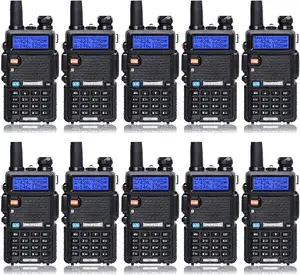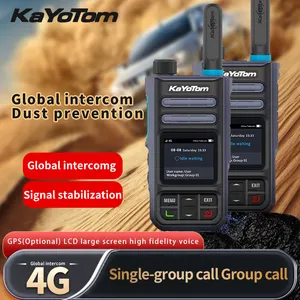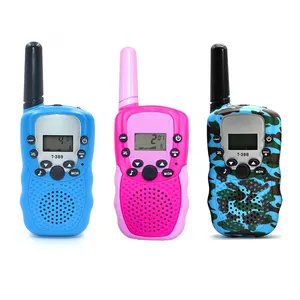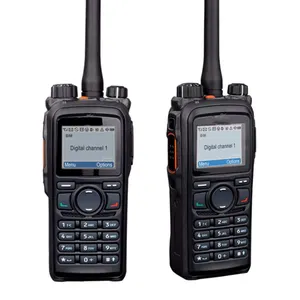A long-range walkie-talkie refers to a durable handheld transceiver radio boasting enhanced broadcasting power and antenna capabilities for long-distance radio communication coverage beyond standard short-range units. While conventional commercial walkie-talkies manage 0.5 to 5 miles using 0.5 to 2 Watts of power, upgraded long-range walkie-talkie models achieve 15 to 35 mile reaches using 4 to 8 Watt output. The extended scopes of long-range walkie-talkie units assist remote site work crews, rural properties, disaster response, and overseas travel communications.
Features of a long-range walkie-talkie
Long-range walkie-talkie devices extend groups' communication abilities through miles of challenging terrain through enhanced output strengths coordinated across base stations and mobile components. The ruggedness and adaptability of long-distance two-way radio units help organizations augment supplemental safety coordination across vast municipal properties, remote job sites, and contingency operations when primary infrastructure disruptions challenge business continuity needing resilient, decentralized tools.
Long-range walkie-talkie equipment enhances communication broadcast strength through a combination of power output increases paired with larger antennas for additional signal gain. Strong-gain base stations and repeater antenna arrays of the long-range walkie-talkie devices also strengthen networking interconnectivity between distributed mobile units compared to standard vertical united types, common in short-range consumer hardware. The latter is only suited for small neighborhoods or events rather than regional, remote coverage.
Average long-range walkie-talkie range estimates depend greatly on operating terrain, with buildings, forestry, or hills hampering distances more than flat open areas where apparent line-of-sight presents fewer filtration barriers. Within improved long-range walkie-talkie equipment, memory channel scanning allows the discovery of more precise regional transmission frequencies through sampling ambient noise and interference across licensed spectrum bands. Positioning long-range walkie-talkie components for optimal line of sight further maximizes potential range. Overall flexibility smoothes adaptation challenges.
Types of long-range walkie-talkie options
While consumer-grade long-distance walkie-talkie units require no special licensing, strong-output long-range walkie-talkie devices typically mandate approved usage applications before retail acquisition to prevent interference on restricted public bands. Evaluating intended long-range walkie-talkie group sizes, terrain, and operating range needs informs ideal power and accessory configurations within regional transmission regulations. Future expandability of long-range walkie-talkie options also allows economies to build towards groups' gradual talk path growth, avoiding immediate overinvestment as interests spread in exploring hobby options.
Uses of long-range walkie-talkie devices
The enhanced reach of long-range two-way radios proves essential for dispersed municipal departments, park staff, and remote infrastructure crews to coordinate around risks like severe weather response and damage assessments where cellular towers fail but direct radio contact persists. Likewise, sprawling campuses utilize upgraded powerful walkie-talkies in emergency kits suited for inter-building coordination by grounds, security, and administration staff when landline outages occur. Still, radios penetrate structures reliably for extended periods as redundant tools. Durability endures when other systems falter.












































 浙公网安备 33010002000092号
浙公网安备 33010002000092号 浙B2-20120091-4
浙B2-20120091-4